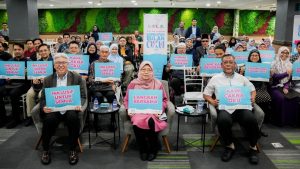In the last few years, the world has experienced devastating extreme weather caused by climate change, record temperatures and rapid ice melt. The Intergovernmental Panel on Climate Change (IPCC) warned that human activity is changing the climate in unprecedented and sometimes irreversible ways.
Apart from that, climate change is a global phenomenon that greatly impacts urban life. It is related to rising global temperatures that causes sea levels to rise, increases the spread of tropical diseases and increases the number of extreme weather events such as floods.
Many cities are already doing a lot by using renewable energy sources, cleaner production techniques and regulations or incentives to limit industrial emissions. Indeed, cutting emissions will also reduce local pollution from industries and transport, thus improving urban air quality and the health of city dwellers.
Therefore, it is essential to achieve success in tackling climate change by coordinated approach and action at global, regional, national and local levels. Besides, here are some ways on how cities can adapt to climate change in this world.
Tree planting
Some of the best ways to fight climate change is not using technology at all. Millions of hectares of trees planted worldwide might really restore ecosystems, enhance water systems and protect nations from the effects of climate change.
Additionally, it may remove quite a lot of carbon dioxide that is now warming the earth from the atmosphere. So, the planting of trees in the city is an initiative in a modest way as they can hinder flooding, filter rainwater, cool and improve air quality and also provide stress relief.
Did you know that tropical rainforests are more useful in defending against climate change? They grow quickly and process rainforest cloud cover that reflects the sun rays back into space, according to the Rainforest Alliance.
In fact, studies have shown that the Amazon rainforest has helped to mitigate the carbon release that is produced by all the nations in its surrounding area.
Create sustainable roofs
Cities are made of concrete, asphalt and other materials that absorb rather than divert heat back to the atmosphere. Other factors that contribute to filling the air with warm exhaust are cars and air conditions.
In addition, “urban heat island effect” can exist during heat waves, which is when cities become crucially hotter than the surrounding area.
In the same way, people who live in the cities are especially unprotected to health risks as temperature rises all around the world. Sidewalks crackle with heat and buildings afford little shaded sanctuary.
So, it is essential to mitigate urban heat island effect by creating sustainable roofs to surfaces that are most exposed to the sunlight.
For example, rooftop gardens are effective because they bring the temperature down, provide shade and clean the air. Next, solar rooftops are better too as they cool the roof and capture the sun’s light for energy.
Water security measures
Water security is the capacity of a population to safeguard sustainable access to adequate quantities of acceptable quality water for sustaining livelihoods, human well-being and socio-economic development for ensuring protection against water-borne pollution and water-related disasters, and for preserving ecosystems in a climate of peace and political stability
City houses are increasing the world’s population, thus the demand for water grows by the day. Hence, the need for securing an inclusive and sustainable water supply is crucial in cities. Furthermore, pollution, suboptimal water management practices and climate change are negatively impacting the health of urban water systems.
It is not easy to secure a water supply for urban areas in water scarce regions. One of the initiatives taken is supporting water scarce cities with concrete engagement which includes providing technical assistance for new management approaches, technological advancements and political practices.
Banning plastic
Around 8.3 billion metric tons of plastic were produced in 1950 and 2015, which is equal in mass to 1 billion elephants. Sadly, the majority of this plastic cannot be recycled.
The last destinations for these plastics that contribute to pollute the ecosystems, harm the animals and contaminate the drinking water are in landfills, oceans and green spaces. As we also know, plastic takes hundreds of years to decipher and it also depends on its composition.
To support the idea of banning plastic in cities, we can use biodegradable plastic where it can be degraded in some conditions such as light, humidity, temperature and oxygen.
In the meantime, we can use aerobic biodegradation that occurs when there is oxygen in the open air. In short, the efforts to ban plastic are taking off largely started by initiatives in cities and awareness of the community to the importance of biodegradable plastics.
Modernizing waste treatment
Did you know that cities produce most of the world’s waste? More than two billion metric tons of municipal solid waste (MSW) are generated worldwide every year, and it is expected to increase roughly by 70 percent by 2050.
On the other hand, we can emulate Songdo in South Korea where their garbage collection is controlled by an automated underground system.
It is an innovative way that does not involve trucks riding around and sorting trash but a person’s trash is sucked up by underground pipes and it’s automatically sorted to be recycled, buried and burned for energy.
Significantly, New York City announced the first installation of pneumatic tubes which once the bin is full, a vacuum carries the material to a processing facility. After that, compactors crush the waste into containers and collectors take them off-site. This remarks that both countries take good care of the environment very well.
In conclusion, there are many ways that cities can invent to apply for protecting climate change. Indeed, climate risk directly affects people’s health, livability and workability.
However, smart cities can be built if communities take good care of their city by adapting to climate change and identifying the most effective and practical actions.
Nurul Syafiqah Che Sukri
Universiti Sains Islam Malaysia (USIM)







